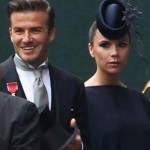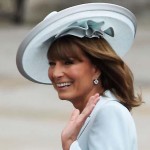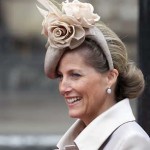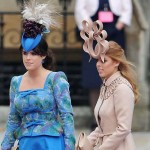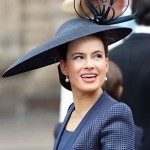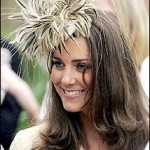Good morning on this Royal Wedding day! I held out writing a blog this week because I was waiting to see what fashions would be taking place today at the Royal Wedding. This week was building in excitement and anticipation about the super secretive wedding dress. Which I just adored- so simple and elegant with a vintage twist, inspired by Princess Grace Kelly’s in the 1950’s. Lace is coming back- how very prim & proper.
But most striking to me were the hats- I just love hats and always have! I will be including lots of pics.
Here is one of me in my favorite hat:
What I found interesting were the spread of styles- some very traditional in shape & texture & others extremely modern & sculpted in artistic form. Check these out, the choices seem to be very generational (young= modern, mature= traditional).
All hat photos were taken from this link: http://abcnews.go.com/International/Royal_Wedding/slideshow/royal-wedding-crazy-hats-13488833
Here is a brief history of hats:
| It was in the late seventeenth century that women’s headgear began to emerge in its own right and not be influenced by men’s hat fashions. The word ‘milliner’, A maker of women’s hats, was first recorded in 1529 when the term referred to the products for which Milan and the northern Italian regions were well known, i.e. ribbons, gloves and straws. The haberdashers who imported these highly popular straws were called ‘Millaners’ from which the word was eventually derived.By the mid 1800’s Swiss and Italian straws, together with imitation straws made from paper, cardboard, grass and horsehair were available to women, along with the introduction of velvet and tulle. |
| During the first half of the nineteenth century the bonnet dominated women’s fashion, becoming very large with many ribbons, flowers, feathers and gauze trims giving an appearance of even greater size. By the end of the century, although bonnets were still prevalent, many other styles were to be found, including wide brims with flat crowns, the flower pot and the toque – feathers and veils abounded.Although early in the 1900’s most hats were enormous and adorned with flowers, feathers, ribbons and tulle, by the mid 1920’s women’s hair had become much shorter with the shingle cut and the cloche, which hugged the head like a helmet with a very small brim, had come into fashion. Now, after World War 1, there was suddenly such a proliferation of styles and materials that many women had to rely on the advice of milliners.From the 1930’s to the 1950’s it could be said that New York, with its many European immigrants had become the world’s leading millinery city, with department stores such as Sacs Fifth Avenue, Henri Bendel and Bergdorf Goodman leading the way with their own millinery workrooms. During the 1930’s and 40’s the tendency was for hats to have higher crowns with smaller brims and once it was War-Time again, it was mainly the trims which were changed with women making do with turbans made from pre-war materials.By the 1950’s the arrival of ready-to-wear clothes was robbing the milliners of their crucial part in the world of fashion. Equally during the War many women, who had not previously worked, found themselves employed and were then loathed to lose their new-found freedom and independence. This new situation meant, however, that they no longer had so much time or energy to spend on being fashionable.In the 1960’s the hat was once again overtaken by wigs and hairdressers, who colored, back-combed and sprayed women’s hair into exotic ‘sculptures’. Both men and women also realized that they could dress less formally and the hat was inevitably a temporary casualty. However, in the 1980’s and 90’s there has been a revival of interest in women’s millinery. This was instigated, to a large extent, by public figures such as the late Princess of Wales’s enthusiasm for wearing hats. Many new hat designers have emerged because of this, and therefore has made the 90’s a very innovative and diverse period for hats.Since their invention, hats have come and gone as status symbols, uniforms and fashion statements as well as being functional sports and protective headgear. |
(courtesy of: http://www.hatsuk.com/hatsuk/hatsukhtml/bible/history.htm )
Looks to me that hats are back! The Duchess of Cambridge will definitely be a fashion icon. The hat she is most famous for wearing and creating a new trend is called the Fascinator- very catchy & appropriate!
Just Beautiful!
So for your next outing, put on that hat and hold your head high!
Hats Off,
Deidra {Dee Dee} Roe

